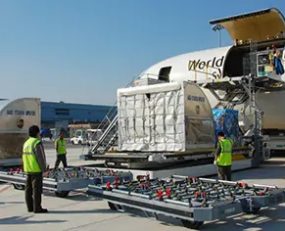
It appears that the core freight transportation markets serving global trade have entered a new phase as the COVID-19 crisis eases. The imbalance between supply and demand has altered but new structural issues are emerging that may make any calculation of medium-term rates difficult.
The changes are best seen in airfreight. For several weeks airfreight-rates have gradually been cooling, with panic over PPE gradually lessening and its shipment providing less support for what had for a time become a dysfunctional market. Judging by the data available, rates on major routes are falling back by around 10-20% from the highs seen in mid-April. Additional capacity is beginning to seep onto the market above and beyond the ‘passenger conversions’ seen in early April. There are now moves in areas such as South East Asia, North Asia and the Middle East to re-introduce passenger flights. If this is sustained, belly-freight will re-enter the market and load factors may fall. If freight demand returns in parallel to increases in capacity the situation may be volatile but rates may not weaken too badly. However, it is nearly impossible to make any prediction about demand in a market characterised by many national economies in severe recessions.
What is clear is that there is a lot of demand to make up. IATA’s latest numbers show that year-on-year volumes in April measured in terms of ‘actual cargo tonne-kilometres’ were 42% lower than in the same period last year.
In parallel, a conflict has arisen between the US and China over access by American airlines to Chinese airspace. The authorities in Beijing had banned American airlines from resuming services to China from mid-June, something which elicited a threat from the US government to ban Chinese airlines from flying to American Cities. The Chinese now seem to have changed their policy and US carrier’s flights may resume, if at a minimal level. Whilst much of this is political positioning within Chinese-American relations, it highlights that market structures may well be quite different in the near future. Such policies, combined with the likely level of airline restructuring, suggest that service patterns and intensity are unlikely to return to what they were.
Therefore, just looking at historical trends on supply and demand may not be adequate for shippers looking at how to understand what the prospects for transport costs may be.
Source: Transport Intelligence
Author: Thomas Cullen